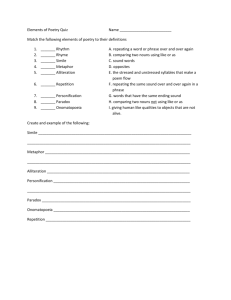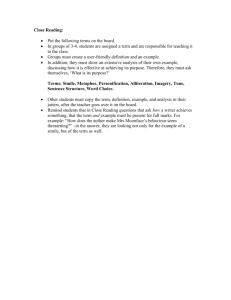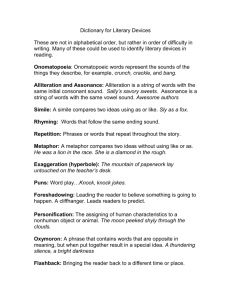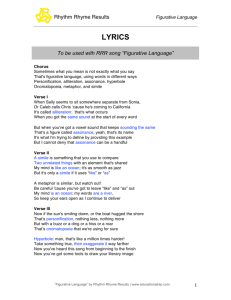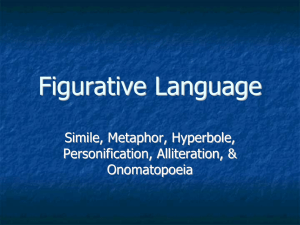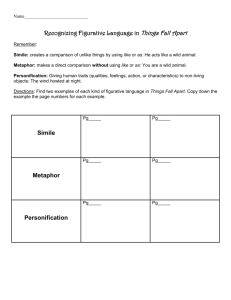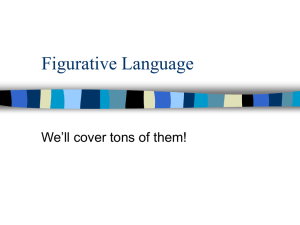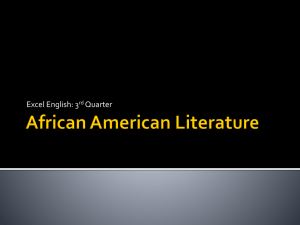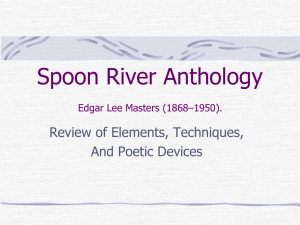Freeman Unit Test Romantic Poetry
advertisement
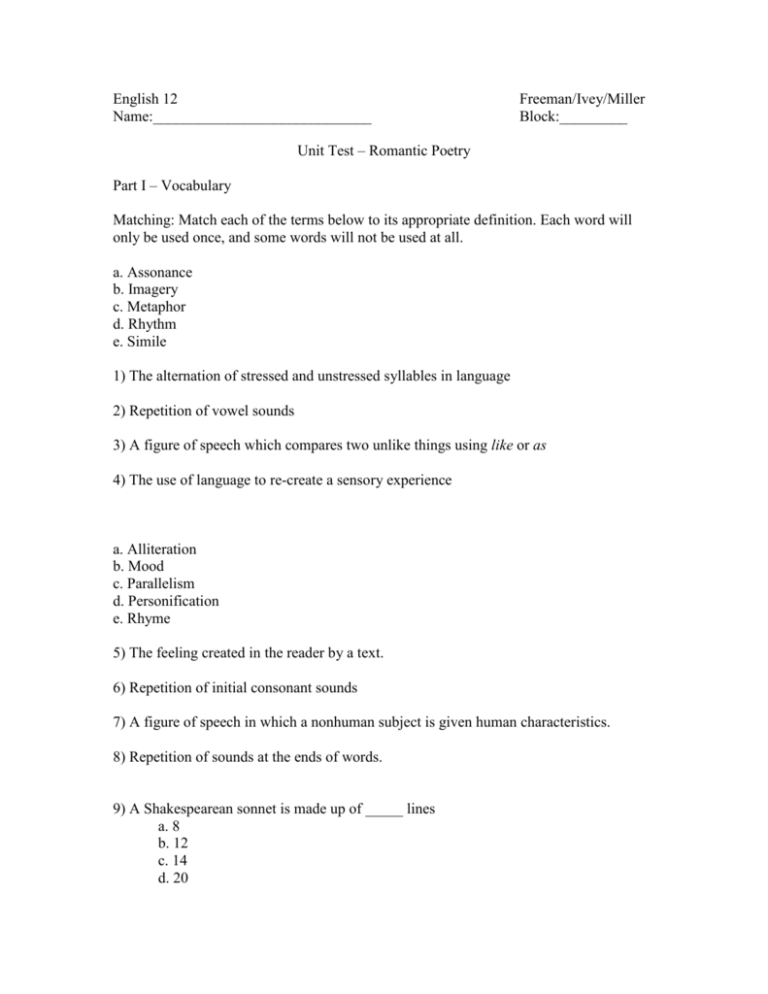
English 12 Name:_____________________________ Freeman/Ivey/Miller Block:_________ Unit Test – Romantic Poetry Part I – Vocabulary Matching: Match each of the terms below to its appropriate definition. Each word will only be used once, and some words will not be used at all. a. Assonance b. Imagery c. Metaphor d. Rhythm e. Simile 1) The alternation of stressed and unstressed syllables in language 2) Repetition of vowel sounds 3) A figure of speech which compares two unlike things using like or as 4) The use of language to re-create a sensory experience a. Alliteration b. Mood c. Parallelism d. Personification e. Rhyme 5) The feeling created in the reader by a text. 6) Repetition of initial consonant sounds 7) A figure of speech in which a nonhuman subject is given human characteristics. 8) Repetition of sounds at the ends of words. 9) A Shakespearean sonnet is made up of _____ lines a. 8 b. 12 c. 14 d. 20 Read the following examples and choose which poetic device is best represented: 7) “Ah, William, we’re weary of weather,” said the sunflowers, shining with dew. “Our traveling habits have tired us. Can you give us a room with a view?” a. Assonance b. Parallelism c. Personification d. Simile 8) When my mother died I was very young, And my father sold me while yet my tongue, Could scarcely cry weep weep weep weep. a. Metaphor b. Onomatopoeia c. Personification d. Repetition 9) From rainbow clouds there flow not Drops so bright to see, As from thy presence showers a rain of melody. a. Alliteration b. Metaphor c. Onomatopoeia d. Simile 10) In the golden lightning Of the sunken sun O’er which clouds are brightening Thou dost float and run; a. Alliteration b. Assonance c. Imagery d. Parallelism Part II – The Romantic Period 11) The Romantic period began partly as a backlash to which change in British society? a. The Renaissance b. The Pre-Raphaelite movement c. The Industrial Revolution d. The reign of Queen Victoria 12) While the Enlightenment was known as “the age of reason,” the Romantic movement might be described as “the age of ___________.” a. intuition b. logic c. religion d. science 13) The “ideal woman” in the early 1800s was often described as: a. bold and outspoken b. highly educated c. strong and full-bodied d. quiet and calm 14) Which Romantic poet experienced “visions” throughout his life? a. John Keats b. Percy Bysshe Shelley c. William Blake d. William Wordsworth 15) The example below best illustrates which aspect of British Romanticism? There is a pleasure in the pathless woods, There is a rapture on the lonely shore, There is society, where none intrudes, By the deep sea, and music in its roar; I love not the man less, but nature more. a. Celebration of the individual b. Interest in the common man c. Importance of imagination d. Value of nature over society
